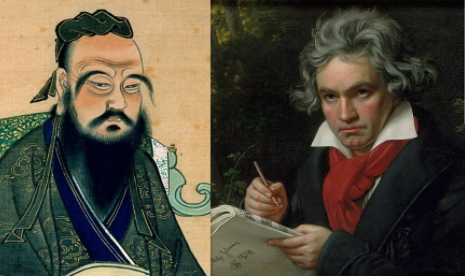The Evolution of Modern Music: A Journey Through Time
Modern music, as we know it today, has undergone a remarkable evolution, shaped by cultural shifts, technological advancements, and artistic experimentation. From the early 20th century to the present day, music has transformed, blending diverse influences and genres to create the rich tapestry we experience today. This article explores the key phases and developments that have contributed to the evolution of modern music.
Early 20th Century: The Birth of Modern Music
The early 20th century marked a significant departure from the traditional forms of music that dominated previous centuries. This period saw the emergence of jazz, a genre that revolutionized the music scene. Originating in the African American communities of New Orleans, jazz combined elements of blues, ragtime, and African rhythms. Pioneers like Louis Armstrong and Duke Ellington brought jazz to the forefront, influencing a wide array of musical styles.
Classical music also saw a shift during this time, with composers like Igor Stravinsky and Arnold Schoenberg breaking away from traditional tonality and exploring atonality and dissonance. Stravinsky’s “The Rite of Spring,” premiered in 1913, shocked audiences with its avant-garde approach and complex rhythms, signaling a new era in classical music.
The 1950s and 1960s: The Rise of Rock ‘n’ Roll and Pop
The post-World War II era brought about significant cultural changes, reflected in the music of the 1950s and 1960s. Rock ‘n’ roll emerged as a dominant force, with artists like Elvis Presley, Chuck Berry, and Little Richard leading the charge. Rock ‘n’ roll’s energetic beats and rebellious spirit resonated with the youth, making it a defining genre of the decade.
Simultaneously, pop music began to take shape, with artists like Frank Sinatra and The Beatles capturing the hearts of millions. The Beatles, in particular, had a profound impact on music, pushing the boundaries of songwriting and studio production. Their experimentation with different musical styles and innovative recording techniques paved the way for future artists.
Motown, founded by Berry Gordy in 1959, played a crucial role in bringing African American artists into the mainstream. The label produced hits from artists like Stevie Wonder, Marvin Gaye, and The Supremes, blending soul, R&B, and pop to create a distinct sound that dominated the charts.
The 1970s: Diversification and Innovation
The 1970s witnessed the diversification of popular music, with the emergence of various genres and subgenres. Disco, characterized by its danceable beats and lavish production, became a cultural phenomenon. Artists like Donna Summer, Bee Gees, and Chic ruled the dance floors, while the genre’s influence extended into fashion and nightlife.
Meanwhile, rock music continued to evolve, branching into subgenres like progressive rock, punk rock, and heavy metal. Progressive rock bands like Pink Floyd and Yes pushed the boundaries of musical complexity and conceptual themes, while punk rock bands like The Ramones and The Sex Pistols embraced a raw, stripped-down sound that challenged the status quo.
Hip-hop emerged in the late 1970s as a cultural movement within the African American and Latino communities in New York City. Pioneers like Grandmaster Flash and Run-D.M.C. laid the groundwork for what would become one of the most influential genres in modern music.
The 1980s: The Digital Revolution
The 1980s marked the beginning of the digital revolution in music. The advent of synthesizers, drum machines, and digital recording technologies transformed the soundscape, giving rise to new genres like synth-pop and electronic dance music (EDM). Artists like Depeche Mode, New Order, and Madonna embraced these technologies, creating iconic sounds that defined the decade.
MTV, launched in 1981, revolutionized the way music was consumed, making music videos a crucial promotional tool. Artists like Michael Jackson and Prince leveraged the visual medium to enhance their music, producing memorable videos that remain influential to this day.
Hip-hop continued to grow, with artists like Public Enemy and N.W.A. using their music to address social and political issues. The genre’s ability to convey powerful messages resonated with a broad audience, cementing its place in the musical landscape.
The 1990s: The Rise of Alternative and Grunge
The 1990s saw the rise of alternative rock and grunge, genres that reflected the angst and disillusionment of a generation. Bands like Nirvana, Pearl Jam, and Soundgarden emerged from the Seattle music scene, bringing a raw, unpolished sound that contrasted with the polished pop of the 1980s. Kurt Cobain, the frontman of Nirvana, became an icon of the era, representing the voice of a generation.
Hip-hop continued to evolve, with the East Coast-West Coast rivalry shaping the genre’s development. Artists like Tupac Shakur, The Notorious B.I.G., and Dr. Dre became central figures, pushing the boundaries of lyrical content and production techniques.
The 1990s also witnessed the emergence of electronic music as a mainstream genre. The rave culture, characterized by its all-night dance parties and underground ethos, brought electronic music to the forefront. Acts like The Prodigy, Daft Punk, and The Chemical Brothers gained widespread popularity, influencing future generations of electronic musicians.
The 2000s: The Digital Age and Genre Blending
The turn of the millennium brought about significant changes in the music industry, driven by advancements in digital technology. The rise of the internet and digital distribution platforms like iTunes and later Spotify revolutionized the way music was consumed. The decline of physical media and the rise of digital downloads and streaming services transformed the music business, making it easier for artists to reach global audiences.
This era saw a blending of genres, with artists drawing inspiration from diverse musical styles. The rise of hip-hop as a dominant genre continued, with artists like Jay-Z, Kanye West, and Eminem achieving massive commercial success. Pop music also evolved, with artists like Britney Spears, Beyoncé, and Lady Gaga pushing the boundaries of the genre.
Indie rock and alternative music gained prominence, with bands like The Strokes, Arcade Fire, and Arctic Monkeys capturing the spirit of the times. These artists embraced a DIY ethos, leveraging the internet to build fan bases and distribute their music.
Electronic music continued to thrive, with the emergence of subgenres like dubstep, electro house, and trap. Artists like Skrillex, Deadmau5, and Calvin Harris became household names, dominating festivals and charts worldwide.
The 2010s: The Streaming Era and Globalization
The 2010s marked the rise of the streaming era, with platforms like Spotify, Apple Music, and YouTube becoming the primary means of music consumption. This shift democratized the music industry, allowing independent artists to gain exposure without the backing of major labels.
Hip-hop maintained its dominance, with artists like Kendrick Lamar, Drake, and Cardi B achieving critical and commercial success. The genre’s influence extended into fashion, film, and politics, solidifying its place in popular culture.
Pop music continued to evolve, with artists like Taylor Swift, Adele, and Ed Sheeran achieving global stardom. The rise of social media platforms like Instagram and TikTok also played a crucial role in shaping the music industry, providing new avenues for promotion and fan engagement.
The 2010s also saw the globalization of music, with artists from different cultures and backgrounds gaining international recognition. K-pop, led by groups like BTS and BLACKPINK, became a global phenomenon, breaking language barriers and achieving unprecedented success. Latin music also gained prominence, with artists like J Balvin, Bad Bunny, and Rosalía bringing reggaeton and Latin trap to mainstream audiences.
The 2020s: A New Decade of Innovation
As we enter the 2020s, the music industry continues to evolve, driven by technological advancements and cultural shifts. The COVID-19 pandemic significantly impacted the industry, with live performances and tours coming to a halt. Artists adapted by embracing virtual concerts and live streams, connecting with fans in new ways.
The rise of artificial intelligence and machine learning is poised to revolutionize music production and distribution. AI-powered tools are being used to create music, analyze trends, and personalize listening experiences. Blockchain technology also holds promise for the industry, offering new ways to manage rights and royalties.
Genre-blending remains a defining feature of modern music, with artists continually pushing the boundaries and experimenting with new sounds. The influence of non-Western musical traditions is becoming more pronounced, as artists incorporate diverse elements into their music.
The evolution of modern music is a testament to the power of creativity and innovation. From the early days of jazz to the digital revolution and the globalization of music, each era has brought new sounds and ideas, shaping the diverse musical landscape we enjoy today. As technology continues to advance and cultural boundaries blur, the future of music promises to be even more exciting and unpredictable. The journey of modern music is far from over, and we can look forward to new genres, new voices, and new experiences that will continue to enrich our lives.



